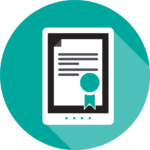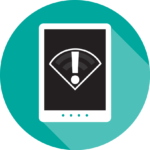Effective digital learning environments are dependent upon successful student learning and achievement. Students and student organizations play an important role in the transition to digital learning. Speak Up 2016 reports that students are using mobile devices for a variety of teacher-directed and student directed activities. Survey data shows that 81% of students are doing internet research with their mobile device and 39% report taking notes on their device. Many students see technology as a gateway to personalizing and self-blending learning around areas of interest that are academic or for career preparation purposes.
Effective digital citizenship helps create a positive school culture that supports the safe and responsible use of digital tools and resources. Students can learn how to use technology safely and responsibly from their parents, teachers and librarians. Families and schools are also a good resource for students to learn how to navigate issues of cyberbullying, internet safety, data privacy, digital footprint and other digital concerns.
The “homework gap” – the gap between students whose internet connections at home are slow or non-existent—and those who have out of school connections with consistent, adequate speed access to conduct school based activities in a safe environment is an increasingly important issue. As schools implement digital learning and teachers require students to have internet access outside of school, the digital divide is increasing. According to Project Tomorrow’s Speak Up Research Project (2016),17% of students in grades 6-12 say that they sometimes cannot do homework due to the lack of connectivity outside of school. This problem is disproportionately common in rural and underserved communities. Some districts have actively partnered with internet providers in their communities to offer discounted service fees, others issue hot spots that students can take home, while others have adjusted school library hours to offer more access. Public libraries are another option for helping to address the “homework gap”. Many libraries offer access to free wireless internet, computers and devices, and digital resources. The FCC’s Lifeline program is another option for low-income families to acquire discounted broadband service at home.


 As a student, how can I learn more about my digital footprint?
As a student, how can I learn more about my digital footprint? My teacher assigns homework that requires access to the internet. How can I access the internet outside of my home?
My teacher assigns homework that requires access to the internet. How can I access the internet outside of my home?